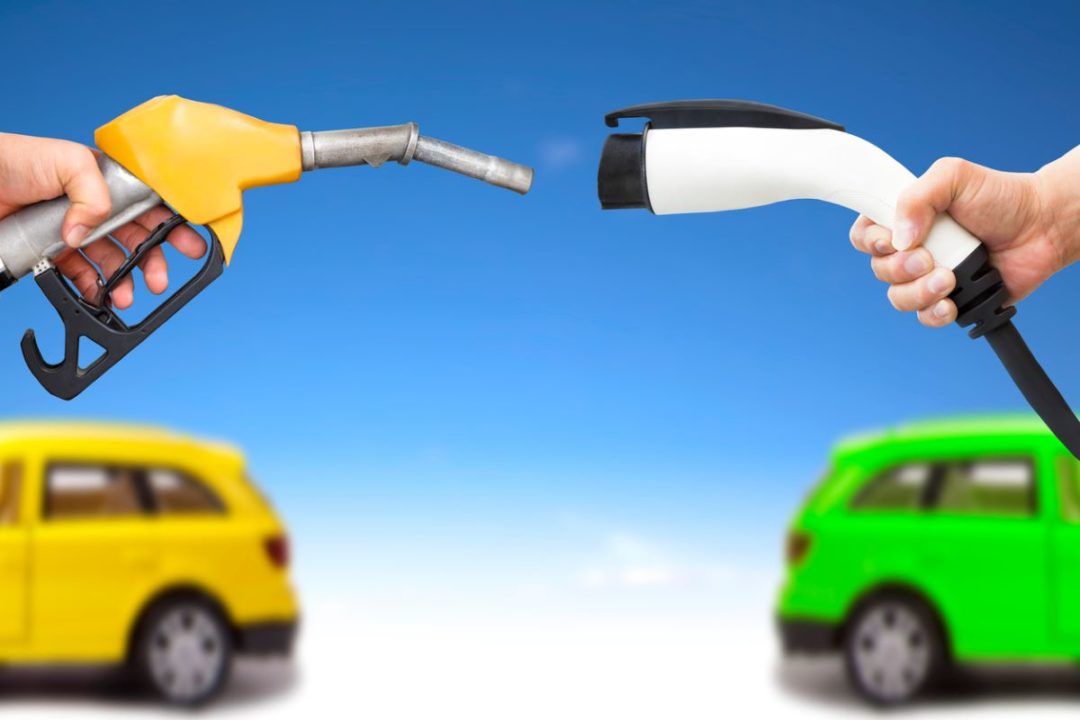
Think Tank
Balancing Supply and Demand As the Auto Industry Goes Electric

Photo: iStock.com/Tomwang112
The global auto industry's shift toward electric is well underway. The projections are staggering — Goldman Sachs Research forecasts that electric vehicle sales will rise from 2% to 61% of worldwide car sales over the next 15 years. EV sales are estimated to grow steeply, eventually making up well over 80% of vehicles sold in a number of developed countries.
Closer to home, with the recent enactment of the Inflation Reduction Act, U.S. public policy is incentivizing domestic assembly of EVs and related components, and it appears to be having an immediate effect. A recent report from Experian attributes the majority of U.S. EV registrations for January, 2023 to domestically sourced vehicles, a likely byproduct of consumer-friendly tax credits in the IRA.
Consumers aren’t the only sector benefitting from the IRA, however. The legislation also includes choice programs targeting manufacturers and incentivizing expansion of the domestic EV supply chain, from mining raw materials to vehicle assembly. The IRA packs in tax credits for battery and materials processing, substantial grants and loans for EV manufacturing facilities, and major investments in battery technology research and developments. The financial impact isn’t insignificant — a Reuters study from the fall of 2022 found that global auto manufacturers have committed $1.2 trillion of investment in batteries and electric vehicles through 2030.
Still, despite widespread optimism for EV integration in the long term, the near future will be beset with manufacturing challenges from suppliers balancing systems for both EV and internal combustion engine platforms. As consumers embrace the transition away from internal combustion engines, the production volume of those engines will decline as EV battery production rises. The result? Unstable supply and shifting demand.
For original equipment manufacturers, maintaining the balance between supply and demand during the changeover is critical and unique, with no real precedent. To continue growth throughout the seismic industry shift underpinning EV adoption, OEMs must split their focus between two ends of the supply and demand spectrum: strengthening supply management programs to ensure manufacturing success, and embracing consumer-focused technology to meet consumer demand.
Supply Management
On the supply side, OEMs continue to face two of the biggest challenges of 2022, which are only expected to continue in 2023: maintaining a free-flowing supply chain and overcoming labor shortages. The domestic production shift, heavily incentivized by the IRA, is impacting the traditional workforce, resource and supply pipelines for OEMs. With increased domestic concentration, supply managers face ever-increasing challenges in achieving their operational goals. While domestic manufacturing has a number of logistical benefits, manufacturing in the U.S. — where safety standards, worker wage and hour protections, and environmental regulations impose a higher burden on OEMs — requires adept legal counsel to ensure compliance. Domestic supply challenges are further exacerbated by the dual production needs of manufacturing both fuel- and battery-powered vehicles at the same time.
During the transition, avoiding supply chain bottlenecks is imperative to achieving OEM goals of product quality, durability, availability. delivery and profitability. Unfortunately, North American factories are still feeling the crunch of the global microchip shortage. According to a report by AutoForecast Solutions, domestic automakers removed 11,500 vehicles from their 2023 worldwide production plans, with the lack of chips expected to eliminate the production of over 2.8 million vehicles this year alone.
The impact of the chip shortage illustrates how a single component can disrupt production for years. Importantly, however, the chip shortage is just one cog in the complex supply chain for EVs. A successful OEM understands the supply chain from start to finish. EV supply chain components include mining of critical minerals, refinement and battery production, followed by vehicle manufacturing. Recycling batteries and critical minerals is the final step in the process, as it plays a crucial role in creating a sustainable EV supply chain.
Three primary elements that OEMs should monitor for their potential to create supply chain bottlenecks include:
- New technologies and changes in materials. As battery research and development increases, so will battery composition and designs, leading to shifting needs in materials, new sources and mining locations.
- Weather and other environmental factors. Hurricanes, tornadoes, floods and other natural disasters can rapidly disrupt key infrastructure, including logistics pipelines and shipping routes.
- Geopolitical events and relationships, including wars and trade agreements that may impact product availability, cost and quality.
While avoiding bottlenecks entirely is unrealistic, awareness of the factors impacting the supply chain can help OEMs better navigate foreseeable changes and insulate against fallout from unexpected events impacting resources.
Technology and Consumer Interaction
To navigate the growing pains of a global change in consumer preference and demand, it’s also critical that OEMs embrace technology. Accurate forecasts and real-time awareness of consumer behavior will factor heavily. Luckily, EVs are a near-perfect source for mining consumer data. In the era of smartphones and technological integration, they are the world’s smart cars. With an abundance of apps and the ever-growing use of Apple CarPlay and Android Auto, OEMs have an unparalleled opportunity to connect directly with consumers and gain valuable insight into what they want and how they behave. In particular, OEM apps integrate the driver experience and keep the manufacturer involved well after the vehicle has left the sales lot.
OEM apps control critical functions of the vehicle, including safety features and alarms, remote locking and unlocking, and battery charging. Today's technology and consumer data are intertwined in a way that benefits OEMs — if they understand how to utilize it. Apps keep the OEM “plugged in” to consumer communication, providing a platform for customer service, vehicle software updates, dealership service departments and marketing opportunities. The ability to gauge customer satisfaction through data and app feedback can go a long way toward helping OEMs improve their products and best practices to meet consumer demand. User-friendly apps and high-satisfaction technology will only help the competitive advantage and give forward-thinking OEMs a direct line to influence their most important critics and satisfy increasingly tech-savvy consumers. Though threats from cyberattacks and data breaches remain an ever-present reality, with stringent data security protocols and insightful legal guidance, OEMs can protect themselves and their consumers as they vie to meet EV demand.
Latasha Johnson is a partner at Ehrenstein|Sager, and a former Assistant General Counsel for the Florida Department of Transportation.






